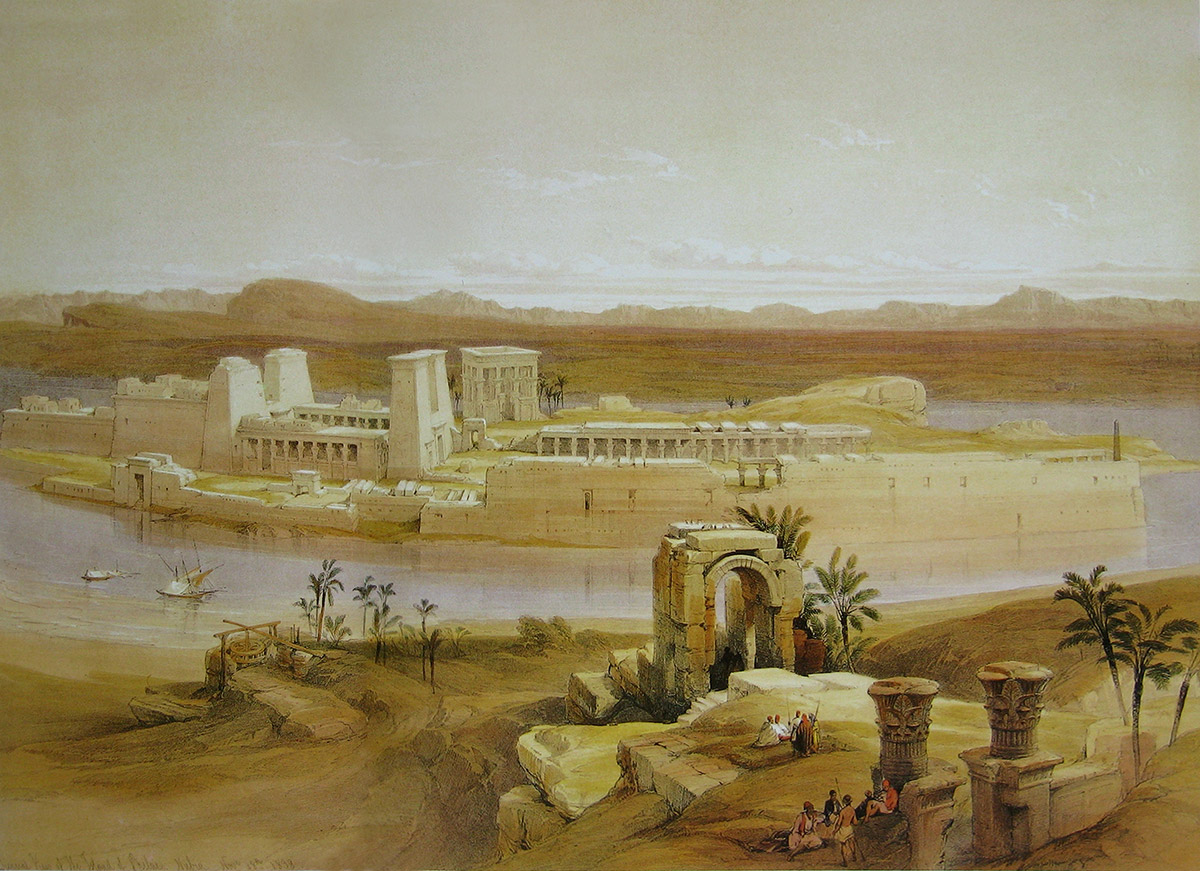Pilgrimage in Kush
The Isis Temple at Philae

The traditional boundary between Egypt and Nubia was at Aswan, where a series of islands and rapids called the 1st Cataract made boat travel difficult. At the southern end of the cataract is a small island called Philae. Philae was the site of a large temple to Isis, an Egyptian goddess also worshipped in Kush.
The Isis Temple at Philae had a close relationship with Kush. Its construction is attributed to King Taharqo (690–664 BCE), one of the rulers of the Kushite 25th Dynasty. Later, during the Ptolemaic period (332–30 BCE), the Greek kings who ruled Egypt rebuilt the temple on a monumental scale. This version of the temple faced south toward Kush and included chapels dedicated to the Kushite gods Arensnuphis and Mandulis. Some priests of this later Isis Temple were appointed by the kings of Kush.
The temple was also a major pilgrimage center. It has more than 1,000 textual graffiti written in a variety of scripts, including the Meroitic script of later Kush. Some of these say that visitors had been sent by the king of Kush in Meroe, 725 kilometers (450 miles) to the south. There are also figural graffiti that include boats and footprints, symbolizing the journey from Meroe. Other images show human figures, animals, and offering tables.

